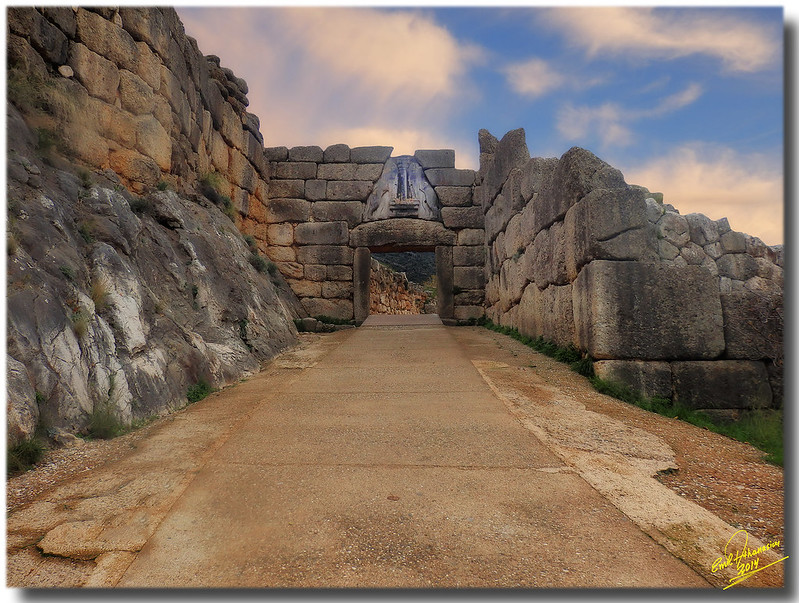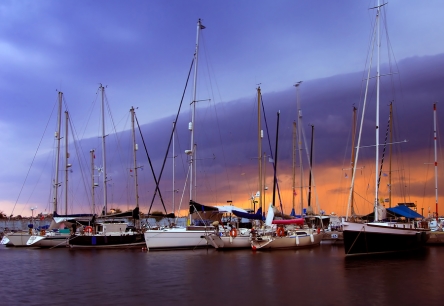- HOME
- Greece Book Reviews
- Bradt Guide to the Peloponnese
Bradt Guide to the Peloponnese
The Bradt Guide to the Peloponnese is the best book on the Greek region which includes attractions like Mycenae, Epidavros, Olympia, Monemvasia, and Nafplion.
It first came out in 2010 and this 2019 update is the fourth edition of this excellent travel guide. This tells you two things. One is that it's a popular guide, and two is that the Peloponnese is a popular part of Greece for travellers and holidaymakers.
The guide ought to be good as the first three editions were written by Andrew Bostock, who first visited the region as a 15-year-old backpacker and later lived in the Peloponnese for several years, working as a tour guide. Indeed, his daughter was born in Kalamata. This is why there are numerous references to the author having been to some places in this guide several times, and seen them change over the years.
Andrew Bostock clearly has wanderlust as he and his family eventually left the Peloponnese to live first in Alexandria in Egypt, and now in the lovely city of Suzhou in China. From there it was rather more difficult for him to revisit Greece to cover the ground again for the update, so this latest edition has been updated by one of Bradt's most experienced authors, Philip Briggs.
The Peloponnese
Having been several times to the Peloponnese myself, researching guidebooks, writing travel pieces, and a few times purely on holiday, I know the area fairly well and can say right away that I can't imagine a better or more thorough guidebook. I read almost every page - only fast-forwarding through some of the lengthy history and mythology sections, which I also did in the Bradt Guide to Northern Greece. Safe to say that if you are fascinated by Greek history and mythology, this guide won't disappoint.
Beyond the Peloponnese
The guide is almost 300 pages so is very comprehensive and also includes a few places beyond the Peloponnese. The island of Kythira gets several pages, for example. Although it's in the Ionian Islands, it makes sense to include Kythira here as it sits at the foot of the Peloponnese and is easily reached by ferry from several ports there.
There's also a short section on Athens, in case you're travelling to the Peloponnese from there. As with the Bradt Guide to Northern Greece, the section is long enough to cover you for 1-2 days, but if you're staying longer you'd be advised to buy a separate Athens guidebook.
The only odd inclusion, to my mind, is a section on Delphi, which is a long way from the Peloponnese. The author says that it is one of Greece's major sites, which is undeniably true, and that you can get there from Athens, which is also true, but I think the space could have been put to better use. What's also odd is that the author suggests you avoid doing one of the organised coach tours to Delphi from Athens as you'll spend most of the day on the bus, but instead recommends getting the local bus... when you will spend even more time on the bus!
Maps
The book has some excellent maps, and the author also suggests which others to buy if you're going to be driving in the Peloponnese, particularly if you're going to be going off-the-beaten-track - where some of the best places are.
If you get the e-book version, the maps are also interactive (as is the whole book). An overview map of the Peloponnese highlights at the start of the book enables you to jump straight to the section you want, perhaps on Kythira or Olympia. There are thirty other maps for towns, cities, and areas, with each one having a link underneath that takes you to the best places to stay and eat pages in that section. I only have a small Kindle and I'd say that to get the best out of the interactivity you'd need something larger, like an iPad Mini or other tablet, but if you have one it's very impressive.
Loving the Peloponnese
The author not only knows but also clearly loves the Peloponnese... well, the whole of Greece in fact. I was constantly smiling at his descriptions as they brought back memories for me:
'The Peloponnese also offers something of a time machine. Twenty years ago in Greece you could still see old men going to their fields on donkey back, old women clad in black preparing vegetables on their doorsteps, main roads blocked by herds of goats, olives being picked with no more aid than a triangular wooden ladder and a big stick, tractors made from converted lawnmowers, and village shops seemingly unchanged since the 1940s. This Greece has disappeared in most of the more visited islands, but in the Peloponnese it endures.'
Sense of Humour
The author also has a good sense of humour, and a good knowledge of the Greek language, as in this section on Greek flowers:
'Orchids grow from two underground bulbs or tubers, and get their name from the Greek for testicle (which is why you need to be a bit wary in the Peloponnese when asking someone to show you their orchids).'
I found myself laughing in several places, when the author talks about some of the Greek people's quirks, or predicaments he found himself in, or the toll that researching this book took on his car. It's not many guidebooks you can say that about, and though the author's writing style is light, there's nothing light about the amount of research that he's done.
Feature Boxes
One thing I really like about this Bradt Guide to the Peloponnese is the inclusion of short - and sometimes not-so-short - feature boxes. These relate to the city or area or topic the author's writing about, enabling him to go into more depth about one aspect or another. So, near the entry for the town of Karadmyli, for example, you get a potted biography of the author Patrick Leigh Fermor, who lived there for many years, while for Mycenae there's a biography of the archaeologist, Heinrich Schliemann. In fact it was worth reading the book just to find out about Spyridon Louis, who won the first modern marathon race in 1896 and is a true Greek hero.
Recommended Walks
Each of the book's main chapters also includes a recommended walk, as the best way to appreciate the beauty of the Peloponnese is to get out on foot and into the countryside, or up the mountainsides.
Enthusiasm
For all his familiarity with the Peloponnese, the author has lost none of his enthusiasm for the place, which caused him to want to live there for several years. He rightly sings the praises of the beauty of Nafplion, accurately describes Monemvasia as 'impossibly romantic', and manages to convey just what a special place Mystra is while also giving sensible, practical information about exploring the site.
All the major sights like Mystra and Mycenae are covered in depth, the driving directions are detailed, and the practical information is thorough, down to how many ATMs a town or village has, and where to find them. In short, you won't get a better guide to the Peloponnese than this.
More Information
You can buy this Bradt Guide to the Peloponnese on the Bradt website and on Amazon.
Latest Posts
-
The Lesser-Known Traditions of Greek Easter
Step off the beaten path this spring and discover the enchanting — and often surprising — Easter traditions found across Greece. -
Easter in the Mystical Castle of Monemvasia
In the castle town of Monemvasia, with its dramatic medieval backdrop and sea views, Easter is a deeply spiritual and atmospheric experience. -
Sifnos: Greece’s Hidden Culinary Star on the Rise
Sifnos, a Cycladic island, is gaining fame for its rich culinary heritage, especially the beloved melopita honey-cheese tart. -
Easter in Leonidio: A Tapestry of Light, Culture and Cliffs
In Leonidio, Easter comes alive with handmade hot air balloons in the sky and lanterns made from bitter oranges in the streets. -
April 9 Strike in Greece to Impact Public Transport, Ferries and Air Travel
Transportation and travel across Greece will face disruptions on Wednesday, April 9, as public transport, ferry and aviation workers join a nationwide strike called by Greek labor unions. -
Ancient Theater of Lefkada Brought Fully to Light Following Systematic Excavation
The Greek Culture Ministry has announced that the first ancient theater ever identified in the Ionian Islands has recently been brought fully to light on Lefkada, revealing an impressive monument that… -
Seven Greek Traditions Recognized as Intangible Cultural Heritage
From traditional barrel-making to age-old folk dances, seven new entries on Greece’s National Inventory preserve the country’s living heritage for future generations. -
Greek Air Traffic Controllers to Hold 24-hour Strike, Disrupting Flights on April 9
The Hellenic Air Traffic Controllers Union have announced a 24-hour strike for Wednesday, April 9, in response to the protest called by the Civil Servants’ Confederation (ADEDY). The strike is being h… -
Ten Best Budget Hotels on Santorini
Greece Travel Secrets picks the ten best budget hotels on Santorini, some with caldera views, some near beaches and some close to the heart of Fira. -
No Ferries in Greece on April 9 as Seamen Join Nationwide Strike
The Pan-Hellenic Seamen’s Federation (PNO) has announced its participation in the 24-hour strike called by the General Confederation of Greek Labor (GSEE) on Wednesday, April 9. The strike, which will…






































